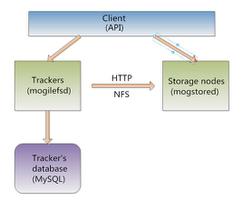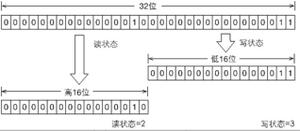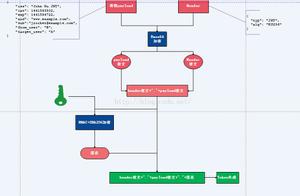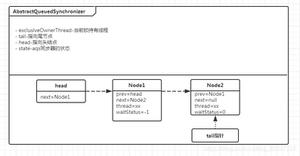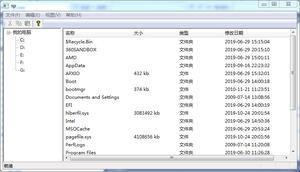详解Java阻塞队列(BlockingQueue)的实现原理
阻塞队列 (BlockingQueue)是Java util.concurrent包下重要的数据结构,BlockingQueue提供了线程安全的队列访问方式:当阻塞队列进行插入数据时,如果队列已满,线程将会阻塞等待直到队列非满;从阻塞队列取数据时,如果队列已空,线程将会阻塞等待直到队列非空。并发包下很多高级同步类的实现都是基于BlockingQueue实现的。
BlockingQueue 的操作方法
BlockingQueue 具有 4 组不同的方法用于插入、移除以及对队列中的元素进行检查。如果请求的操作不能得到立即执行的话,每个方法的表现也不同。这些方法如下:

四组不同的行为方式解释:
- 抛异常:如果试图的操作无法立即执行,抛一个异常。
- 特定值:如果试图的操作无法立即执行,返回一个特定的值(常常是 true / false)。
- 阻塞:如果试图的操作无法立即执行,该方法调用将会发生阻塞,直到能够执行。
- 超时:如果试图的操作无法立即执行,该方法调用将会发生阻塞,直到能够执行,但等待时间不会超过给定值。返回一个特定值以告知该操作是否成功(典型的是true / false)。
无法向一个 BlockingQueue 中插入 null。如果你试图插入 null,BlockingQueue 将会抛出一个 NullPointerException。
可以访问到 BlockingQueue 中的所有元素,而不仅仅是开始和结束的元素。比如说,你将一个对象放入队列之中以等待处理,但你的应用想要将其取消掉。那么你可以调用诸如 remove(o) 方法来将队列之中的特定对象进行移除。但是这么干效率并不高(译者注:基于队列的数据结构,获取除开始或结束位置的其他对象的效率不会太高),因此你尽量不要用这一类的方法,除非你确实不得不那么做。
BlockingQueue 的实现类
BlockingQueue 是个接口,你需要使用它的实现之一来使用BlockingQueue,Java.util.concurrent包下具有以下 BlockingQueue 接口的实现类:
- ArrayBlockingQueue:ArrayBlockingQueue 是一个有界的阻塞队列,其内部实现是将对象放到一个数组里。有界也就意味着,它不能够存储无限多数量的元素。它有一个同一时间能够存储元素数量的上限。你可以在对其初始化的时候设定这个上限,但之后就无法对这个上限进行修改了(译者注:因为它是基于数组实现的,也就具有数组的特性:一旦初始化,大小就无法修改)。
- DelayQueue:DelayQueue 对元素进行持有直到一个特定的延迟到期。注入其中的元素必须实现 java.util.concurrent.Delayed 接口。
- LinkedBlockingQueue:LinkedBlockingQueue 内部以一个链式结构(链接节点)对其元素进行存储。如果需要的话,这一链式结构可以选择一个上限。如果没有定义上限,将使用 Integer.MAX_VALUE 作为上限。
- PriorityBlockingQueue:PriorityBlockingQueue 是一个无界的并发队列。它使用了和类 java.util.PriorityQueue 一样的排序规则。你无法向这个队列中插入 null 值。所有插入到 PriorityBlockingQueue 的元素必须实现 java.lang.Comparable 接口。因此该队列中元素的排序就取决于你自己的 Comparable 实现。
- SynchronousQueue:SynchronousQueue 是一个特殊的队列,它的内部同时只能够容纳单个元素。如果该队列已有一元素的话,试图向队列中插入一个新元素的线程将会阻塞,直到另一个线程将该元素从队列中抽走。同样,如果该队列为空,试图向队列中抽取一个元素的线程将会阻塞,直到另一个线程向队列中插入了一条新的元素。据此,把这个类称作一个队列显然是夸大其词了。它更多像是一个汇合点。
使用例子:
阻塞队列的最长使用的例子就是生产者消费者模式,也是各种实现生产者消费者模式方式中首选的方式。使用者不用关心什么阻塞生产,什么时候阻塞消费,使用非常方便,代码如下:
package MyThread;
import java.util.Random;
import java.util.concurrent.BlockingQueue;
import java.util.concurrent.LinkedBlockingQueue;
import java.util.concurrent.TimeUnit;
public class BlockingQueueTest {
//生产者
public static class Producer implements Runnable{
private final BlockingQueue<Integer> blockingQueue;
private volatile boolean flag;
private Random random;
public Producer(BlockingQueue<Integer> blockingQueue) {
this.blockingQueue = blockingQueue;
flag=false;
random=new Random();
}
public void run() {
while(!flag){
int info=random.nextInt(100);
try {
blockingQueue.put(info);
System.out.println(Thread.currentThread().getName()+" produce "+info);
Thread.sleep(50);
} catch (InterruptedException e) {
// TODO Auto-generated catch block
e.printStackTrace();
}
}
}
public void shutDown(){
flag=true;
}
}
//消费者
public static class Consumer implements Runnable{
private final BlockingQueue<Integer> blockingQueue;
private volatile boolean flag;
public Consumer(BlockingQueue<Integer> blockingQueue) {
this.blockingQueue = blockingQueue;
}
public void run() {
while(!flag){
int info;
try {
info = blockingQueue.take();
System.out.println(Thread.currentThread().getName()+" consumer "+info);
Thread.sleep(50);
} catch (InterruptedException e) {
// TODO Auto-generated catch block
e.printStackTrace();
}
}
}
public void shutDown(){
flag=true;
}
}
public static void main(String[] args){
BlockingQueue<Integer> blockingQueue = new LinkedBlockingQueue<Integer>(10);
Producer producer=new Producer(blockingQueue);
Consumer consumer=new Consumer(blockingQueue);
//创建5个生产者,5个消费者
for(int i=0;i<10;i++){
if(i<5){
new Thread(producer,"producer"+i).start();
}else{
new Thread(consumer,"consumer"+(i-5)).start();
}
}
try {
Thread.sleep(1000);
} catch (InterruptedException e) {
// TODO Auto-generated catch block
e.printStackTrace();
}
producer.shutDown();
consumer.shutDown();
}
}
阻塞队列原理:
其实阻塞队列实现阻塞同步的方式很简单,使用的就是是lock锁的多条件(condition)阻塞控制。使用BlockingQueue封装了根据条件阻塞线程的过程,而我们就不用关心繁琐的await/signal操作了。
下面是Jdk 1.7中ArrayBlockingQueue部分代码:
public ArrayBlockingQueue(int capacity, boolean fair) {
if (capacity <= 0)
throw new IllegalArgumentException();
//创建数组
this.items = new Object[capacity];
//创建锁和阻塞条件
lock = new ReentrantLock(fair);
notEmpty = lock.newCondition();
notFull = lock.newCondition();
}
//添加元素的方法
public void put(E e) throws InterruptedException {
checkNotNull(e);
final ReentrantLock lock = this.lock;
lock.lockInterruptibly();
try {
while (count == items.length)
notFull.await();
//如果队列不满就入队
enqueue(e);
} finally {
lock.unlock();
}
}
//入队的方法
private void enqueue(E x) {
final Object[] items = this.items;
items[putIndex] = x;
if (++putIndex == items.length)
putIndex = 0;
count++;
notEmpty.signal();
}
//移除元素的方法
public E take() throws InterruptedException {
final ReentrantLock lock = this.lock;
lock.lockInterruptibly();
try {
while (count == 0)
notEmpty.await();
return dequeue();
} finally {
lock.unlock();
}
}
//出队的方法
private E dequeue() {
final Object[] items = this.items;
@SuppressWarnings("unchecked")
E x = (E) items[takeIndex];
items[takeIndex] = null;
if (++takeIndex == items.length)
takeIndex = 0;
count--;
if (itrs != null)
itrs.elementDequeued();
notFull.signal();
return x;
双端阻塞队列(BlockingDeque)
concurrent包下还提供双端阻塞队列(BlockingDeque),和BlockingQueue是类似的,只不过BlockingDeque提供从任意一端插入或者抽取元素的队列。
以上是 详解Java阻塞队列(BlockingQueue)的实现原理 的全部内容, 来源链接: utcz.com/p/214077.html


